At a Glance:
- 3.7 million people died in diamond funded wars. Not one person in the jewelry sector was held accountable.
- Instead of restitution to impacted communities, we have the Kimberley Process.
- Kimberley, the basis for “conflict free diamond” narrative, covers up crimes hidden in plain sight.
- Jewelers should boycott and denounce the term "conflict free diamonds." Period. End of story.
- Ethical providence should be based on transparency, mine ownership, and polishing conditions.
“Conflict free diamonds” is a totally specious narrative. The term was designed to hide crimes in plain sight, allowing diamondteers to literally transforme an atrocity into a marketing opportunity.
Entire villages, literally millions of people, were killed. And, for those communities, there was no resolution or restitution. The lives of small-scale diamond miners who supplied those diamonds for those wars has changed very little over the past twenty years.
Though the term “conflict free” in today’s market conveys the positive notion of ethical diamond sourcing, the true source of the “conflict free” idea is rooted in South African racism and apartheid.
The very people who were commercially complicit in funding the diamond wars were involved in shaping the narrative that erased the crimes.
The term "conflict free diamonds" is now perhaps the keystone to marketing in the jewelry sector—virtually every jeweler uses it because it is nearly impossible for the average person wanting a diamond to figure out what's behind the narratives.
As a jeweler for 24 years, an ethical jewelry pioneer, freelance writer on jewelry issues, and founder of Fair Jewelry Action, a human rights and environmental justice network, I watched events unfold and have been involved in ethical sourcing issues from the beginning— named a “vanguard of responsibility” even back in 2007.
This unique perspective enabled me to write a 45,000 word investigative work, Ethical Jewelry Exposé: Lies, Damn Lies and Conflict Free Diamonds, published online in October 2018.
What I’m providing here is an account you won’t find anywhere else. Even now, the very cleverness of the deception and coverup astonishes me and will most likely astonish you too.
Let us journey, then, into the dark heart of the term “conflict free diamonds.”
The Blood Diamond Wars
The birth of ethical jewelry was really initiated because of the diamond wars, so we have to start there.
The blood diamond wars started in the early '80s, when De Beers controlled 85% of global diamond mining. In those days, De Beers had their hands in nearly all diamonds coming out of Africa.
During that time, De Beers hired the paramilitary group Executive Outcomes, aka "South Africa’s Apartheid Solders,” which operated in Sierra Leone and Angola.
Soldiers for hire by mining companies were rooted in the most heinous elements of white supremacy and South African Apartheid. Mining companies hired them to do their dirty work.

Diamonds are a new version of an old story. Illustration from the Ethical Jewelry Exposé.
To understand more, watch the recently released film Cold Case Hammarskjöld. And for additional background, read this NY Times April 2000 piece, Diamonds Were A Warlord’s Best Friend.
Executive Outcomes disbanded in 1998. That same year, De Beers stopped purchasing diamonds from warlords. Also in that year, the NGO Global Witness exposed the blood diamond conflict to the world, publishing Rough Trade.
De Beers’ attempt to hold onto their diamond monopoly was failing by the late '90s. Plus, hoovering up all diamonds in the world created a significant inventory problem.
Because there's no transparency in the supply chain, we do not know what happened to those blood diamonds—or even how many De Beers diamonds are still sitting in shoe boxes in their London offices.
Yet today, De Beers, controlling about thirty percent of the diamond market, has successfully marketed themselves as the leader of “ethically sourced diamonds” and the source of an upcoming “fair trade” diamond. Yes, De Beers is now the all about "responsible" sourcing!
What’s even more astonishing is this:
Their ability to transform the image of themselves over the past twenty years has proven to be a model for the broader North American jewelry sector which needs to satisfy the acute concern of today’s market.
Ethical/Responsible Babble Model
Ethical/Responsible jewelry is a hot consumer trend. Purchases by Millennials and Gen Z are often defined by their social and environmental causes.
What De Beers piloted after the Blood Diamond wars became a model for other large-scale mining companies with deep histories of social and environmental atrocities.
If you find this hard to believe, follow these links:
Anglo Gold, BHP Billiton, Newmont, Rio Tinto. All these companies are certified under a “responsible gold” standard created and designed by the Responsible Jewellery Council, which is controlled by these and other multinational mining and retail corporations—including De Beers.
The Responsible Jewellery Council (“the Council”) was founded by 14 companies in 2004—by De Beers and 13 other members, including Rio Tinto, BHP Billiton, Cartier, Newmont Mining, Signet Group, Tiffany & Co, Zales Corp, and Jewelers of America. These companies represent hundreds of billions of dollars of retail and mining interests.
Today, the Council has over 1100 members. These standards, which have become the basis of the responsible/ethical jewelry story, are not only the foundation of the mainstream jewelry trade…
They are endorsed by the ethical darling Brilliant Earth, reviewed here, which completely dominates and defines ethical sourcing for Millennials and Gen Z’s in the North American market.
If you want to dig deeper into the Responsible Jewellery Council, start here.
But the key point is this: traceability and transparency to a source become the main argument for responsible sourcing. I go deeper into this problem in this article I wrote for Jewellery Business Magazine.
But here’s what you need to know:
If you own a large gold or diamond mine, you have providence to source. Your product is traceable and transparent to that mine. This definition of “responsible sourcing” was piloted by De Beers back in 2000.
Essentially, large mining companies can rebrand themselves as “responsible” without making any changes to their supply chain. All this despite alleged abuses and atrocities detailed in those links above.
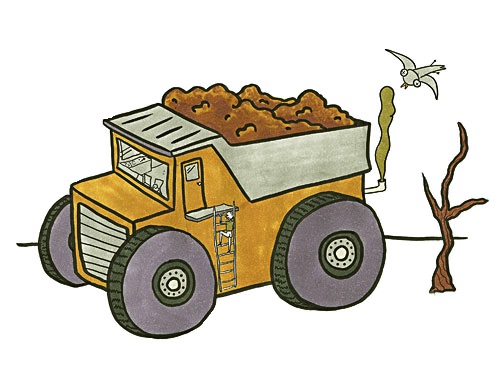
Any possibility of change in the supply chain, dealing ethically with small-scale mining communities through fair trade, is thrown under the bus. Responsible/Ethical becomes all about marketing and distribution of large mining operations, supported by forward-facing journalistic stories and bloggers who go along for the ride.
This is particularly true in North America, where I have been the only Fairtrade Gold jeweler since 2015—while there are over 250 such jewelers in the UK alone.
But, we’re getting a bit ahead of ourselves. Let’s go back to De Beers.
Making Killing into a Virtue
Yes, I mean killing, though that is not how the NY Times framed in back on August 22, 2000. They called the killing something else… “Controversy Over Diamonds Made Into A Virtue By De Beers.” That’s right: complicity in killing 3.7 million people was merely a “controversy” that became a virtue—and, as the article outlines, a business opportunity.
What De Beers realized is that they could, because of their existing diamond supply, mines, and Botswana partnership, simply now claim that their diamonds were traceable to source and therefore conflict free.
Here’s what you need to understand at this point:
There are two types of diamond miners: large-scale and small-scale.
Small-scale diamond mining is about 20% of the global supply chain and represents about two million people. These mining communities are characterized by extreme poverty and exploitation. They are the source of conflict diamonds.
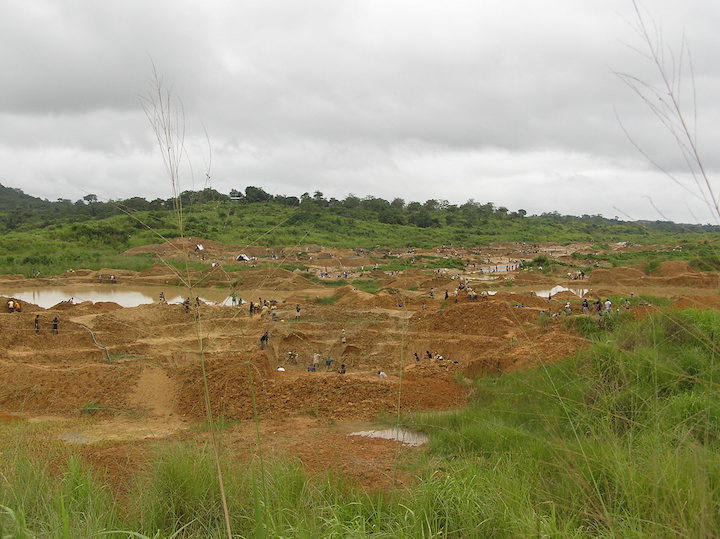
Small-scale diamond diggers in Sierra Leone are still working for a few dollars a day.
Large diamond mines controlled by multinationals have a contained supply chain. By certifying that supply chain as ethical, not only do you have no need to change the business model…you can also abandon small-scale diamond miners.
But to do this, you need a framework to support your “conflict free” narrative and shield your product from attack. Enter the Kimberley Process Certification Scheme (KP), a broad international initiative createred by the diamond sector with the support and participation of the UN and prominent non-government organizations. Dozens of countries ratified it in 2003.
Kimberley Certification (KP)
I've already mentioned that KP was shaped and formed by the very diamond dealers who were complicit, directly or indirectly, in the blood diamond wars. It was a quasi colonial affair that didn't change the lives of those living in impacted communities because they had no representation.
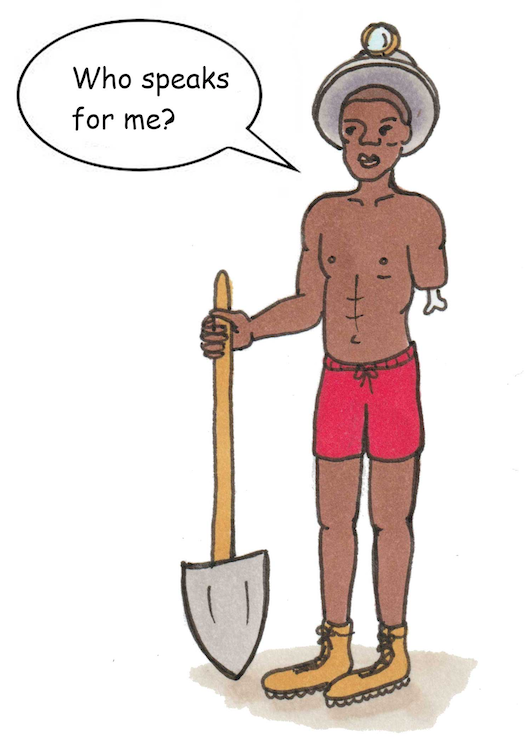
That’s why, even now, sixteen years later, aside from a few high-publicity low-market impact initiatives, they continue to work in abject poverty.
The diamond trade framed KP created a system that would certify their existing methods as “conflict free” for the public.
But here's a critical point:
The Kimberley Process is both a certification system and the foundation of the “conflict free diamonds” narrative. The former has been completely discredited by NGOs—and even people in the jewelry trade—for many years.
Even Martin Rappaport, perhaps the biggest name in the diamond sector—and certainly the most important person among those advocating for ethical diamonds—recently said that the Kimberley Process is bullshit.
Yet, even though the KP has been widely acknowledged as ineffective, its narrative of “conflict free diamonds” is more powerful than ever.
As a jeweler, I know that all I need to do to assure my customers that a diamond is “ethical” is to tell them that it is certified “conflict free.”
You cannot blame consumers, however, when you have utterly inept journalists publishing articles in authoritative sources, such as Forbes, stating that Kimberley Certification…“ensures… sourcing is ethical and that those who mine the diamonds are paid fairly.”
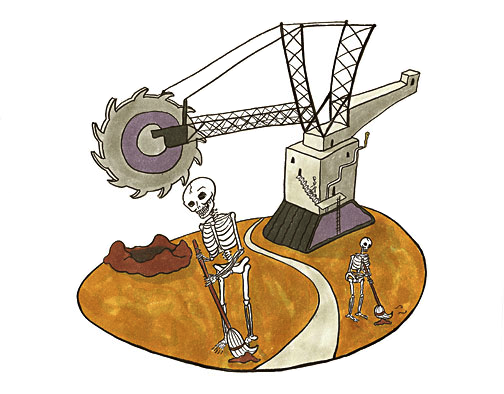
Here are some facts:
The Kimberley Process only applies to rough diamonds, not polished. So, if conflict diamonds are smuggled into a diamond cutting center, they become “conflict free.” Diamond smuggling is common, and KP certificates are as easy to forge as an old driver’s license.
Diamond scandals are a dime a dozen. In Surat, India, 90% of diamonds are polished by 100,000 child labors who suffer from vision loss by the time they reach adulthood. And fewer than two thirds of the diamonds that arrive here are from legitimate sources, according to an article in Foreign Policy entitled Rough Cut.
Even today, few diamond purveyors will reveal where their diamonds are polished—it’s basically ignored in any ethical diamond conversation.
Moreover, “conflict free” does not apply to human rights abuses and corruption. Nor are environmental impacts considered. Certainly, even Canadian diamond mining in the pristine Northern Territories has conflict if you care about the rights of nature.
If you want to read more about how the Kimberly Process lost its credibility, see Chapter 6 of my Exposé.
The Ethical Jeweler Dilemma
Millions of women around the world are wearing engagement rings as a representation of their marriage and fidelity, while some of those who dug those diamonds have stumps for hands.
While mainstream jewelers rely on the Kimberley Process as their main credential for ethical diamond veracity, the jewelers who are actually concerned about diamond issues, the so called "ethical jewelers" have a little more finesse.
Brilliant Earth, for example, brands themself as “Beyond Conflict Free.” (Sure, endorse a narrative that forgets 3.7 million people killed in diamond-funded wars, because you are “beyond” it.)
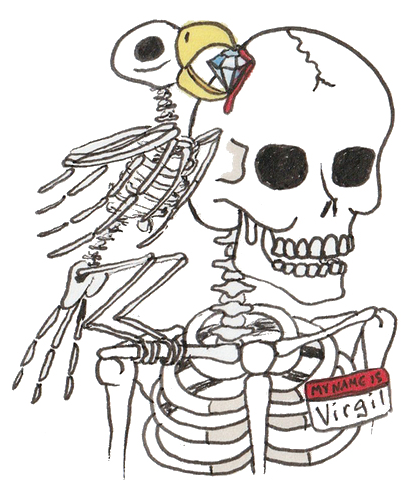
Yet they are not alone. Other jewelers who have pioneered ethics in the sector still support the “conflict free” diamond narrative—through strategies outlined in the fourth chapter of my Exposé.
Stick with me here:
I really want to fill out the picture for you so you can understand how, back between 2000 and 2003, when the Kimberley Process was being created, it was that the diamondteers who framed the KP—who walked away from the mass killings.
There's one more critical piece that I have not written about.
The Faustian Bargain
I mentioned earlier that the blood diamond story was exposed by non-governmental organizations, particularly Global Witness.
The support of Global Witness and Partnership African Canada (now called “Impact”) was critical to KP’s launching. They had earned the trust of civil society by exposing the issue in the first place.
However, they made a Faustian bargain, a deal with the Devil.
They did not demand accountability for the wars. Not one person in the diamond sector was ever held responsible. Additionally, they failed to ask for restitution to impacted communities.
What mattered most was the future, not the past. But William Faulkner said, "The past is never dead. It's not even past.”
There was no change in diamond sourcing after the blood diamond wars. Essentially, they threw small-scale miners impacted by the wars under the bus.
In fact, burying the past is a central strategy in the responsible sourcing narrative.
Let me show you a document from my research which is critical to any understanding of what’s behind the “responsible/ethical” narrative pitched to our current consumer market:
In 2012, the Responsible Jewellery Council published this document as part of its standard:
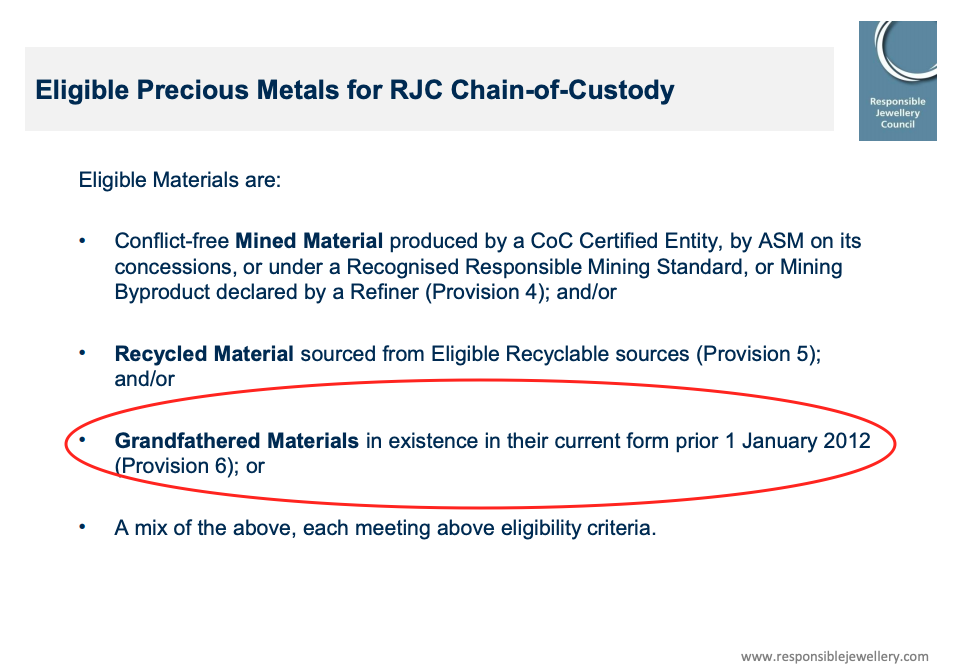
Regardless of conflict or blood involved, gold, diamonds, or any mined material garnered in the past were all now “responsible.”
The NGOs obviously hoped that the Kimberley Process would change the supply chain. It just took few years and Zimbabwe to reveal the NGOs had lost their Faustian bargain, as I detail here.
NGOs, with a few exceptions, continue to engage—often with utter confusion and ineffectiveness—with the jewelry sector. Case in point: Read my critique of Human Rights Watch's The Hidden Cost of Jewelry and associated #BehindTheBling campaign.
The Birth of Ethical Jewelry
Nevertheless, the blood diamond issue, and the release of the Blood Diamond film in 2006 was, as I write here, the birth of the ethical jewelry movement.
Despite the trade’s worst fears, diamond sales were not impacted, and the Kimberley Process help up to public scrutiny.
What is most unbelievable is this: jewelers believed that they, not the Africans killed, were the real victims of the blood diamond wars.
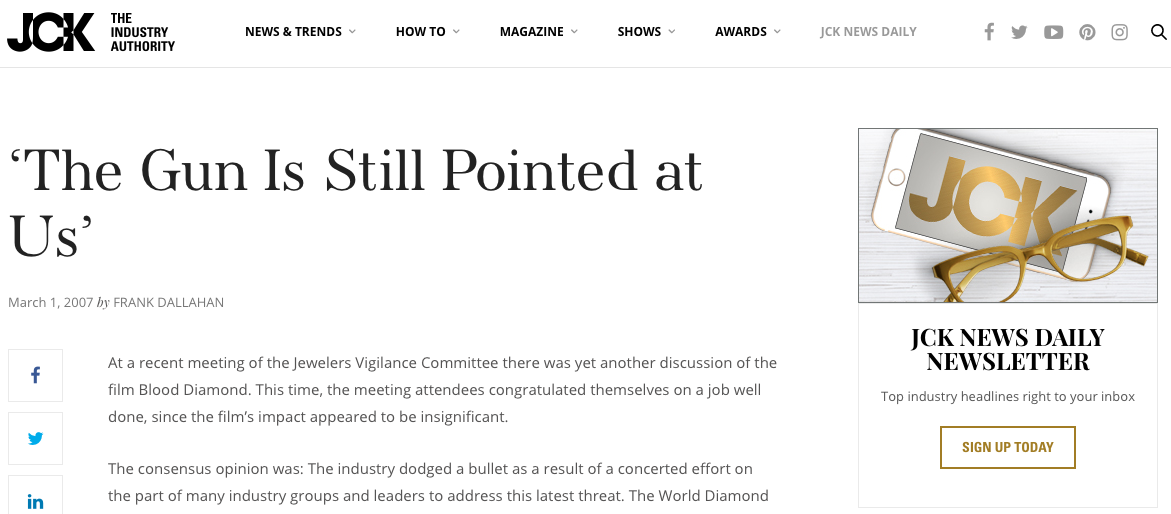
We have “dodged the bullet,” proclaimed JCK Magazine—though, “The gun is still pointed at us.”
It was back in 2006, about nine months before that article above was published, that I attended Martin Rapaport’s first Fair Trade Diamond meeting at the jewelry industry’s premier trade show: JCK in Vegas. Next door, hundreds attended lectures in how to market diamonds as “conflict free.” It was in that meeting, with a few jewelers and a bunch of trade magazine reporters, that I fully began to understand a key point:
The blood diamond atrocity was merely a marketing issue.
[I still had hopes for Kimberley—it wasn’t until 2013 that I called for it to be abandoned on the Corporate Social Responsibility blog—see my article Part 1 and Part 2.]
Kimberley was just part of a broader strategy to created consumer confidence. The elders of the jewelry trade realized that a greater defense was needed to protect themselves from consumer scrutiny.
They also needed to show that they had addressed the issue of small-scale diamond diggers—that they actually cared! So, they set up a high profile initiative that showed they were really concerned about small scale diamond miners.
The Diamond Development Initiative
First, let’s look at how this initiative is framed today. Let’s start with this screenshot from Brilliant Earth’s website:
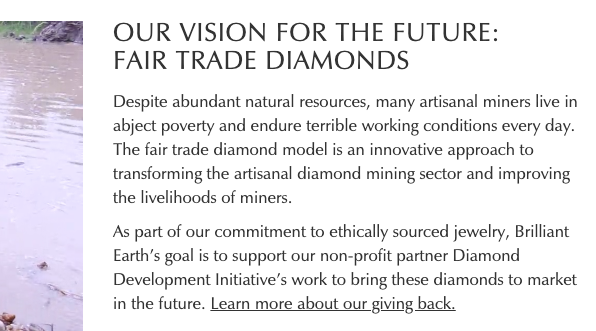
The Diamond Development Initiative was formed back in 2005, and those who followed it, including myself, had high hopes for this initiative. Tiffany Foundation even funded a feasibility study for Fair trade Diamonds back in 2008.
Check out this purpose document from the Diamond Development Initiative:
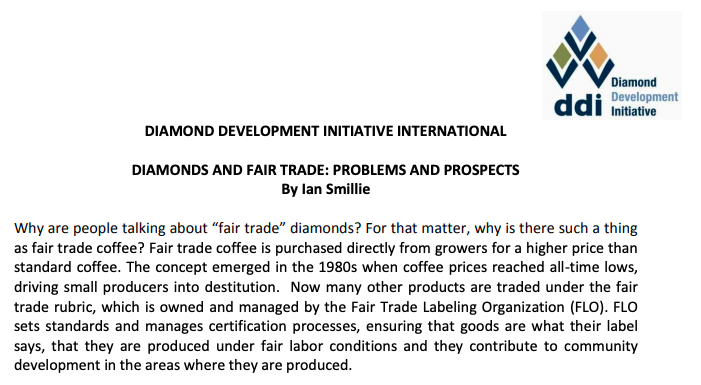
In other words, it was initially framed out as a possible FLOCERT (Fairtrade International) initiative.
Over the years, this became a broad civil society community effort.
I kept waiting and thinking, when is this fair trade diamond gonna come out? And it was still not out…
After ten years, I concluded it was basically a smokescreen that jewelers could use as a talking point to show that the industry cared about the small-scale miner. I should mention that it my smokescreen analogy isn't entirely true. The work that the Diamond Development Initiative, the standards that have been creating, is pathbreaking and an important model except in one regard...
But what is missing is connection to an open market which wants this diamond, this potentially fair trade diamond, to wear. Yet...today, 14 years after the Diamond Development Initiative started, not one diamond has come to market under that brand.
What the hell is happening?
In fact, the Diamond Development Initiative, the most powerful and prominent initiative to support small-scale miners, was given over to De Beers.
To learn more, read my piece, Death of the Fair Trade Diamond.
Giving De Beers control of what could have been a potentially market-disrupting diamond, the fair trade diamond, is like making David Duke head of the Southern Poverty Law Center.
To quote part of my conclusion of my Exposé:
“The extraction of resources, apartheid, colonialism, the slave trade, can be traced back to the voyages of the early explorers, the beginning of early modernism—the Portuguese slave traders in search of gold in the 15th and 16th centuries. The Portuguese were responsible for 75% of the slave trade that built the early economy of the US.
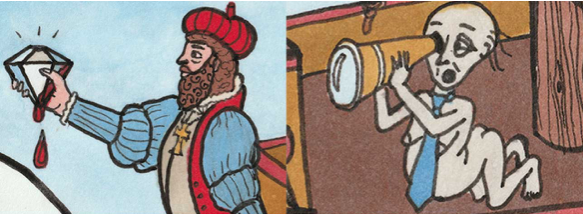
The modern-day version of Vasco da Gama wears a business suit and works as the CEO of a multinational large-scale mining company. He strolls about a United Nations conference, extolling the virtues of his ethical chain of custody approach.”
The Path Forward for Those Who Want a Diamond
Using the term “conflict free diamonds” is a denial of history, an affirmation that you can kill millions of people and get away with it. Not one person in the diamond sector has ever been personally held accountable for wars funded by diamonds in the ‘80s and ’90s.
The term “conflict free diamonds” is the same as saying “Black African lives don’t matter.”
In the best possible world, we would be able to purchase a fair trade diamond from a small-scale mining organization that is independently certified. I deeply suspect that De Beers will never let that happen. Even if they do, they will control the narrative and market for their own ends.
For the ethically-minded consumer, what we have today are various diamond options, each with advantages and disadvantages. What matters most is that we know the actual sourcing of the diamond, who owns the mine, and where it is cut, as I outline in this article.
There is great potential for change, great energy for change. Studies about Gen Z have shown that 78% of those aged 18-24 will choose ethical over cheap.
But the problem is, this potential has been utterly subverted by the interests of large-scale multinationals that want to maintain the current supply chain. The press, meanwhile, merely manufacture consent.
And even small jewelers, Ethical Metalsmiths who have high integrity and values, unite and lend credibility to the Responsible Jewellery Council.
What we need, also, is a path forward, an ethical jewelry based on empowering local producer communities, the small-scale miner. We need truth and reconciliation, and restitution to impacted communities. We need a new coalition of social justice organizations, NGOs and jewelers who wish to create a new economic model.
In the meantime, we should boycott using the term "conflict free diamonds."
This is a critical piece of a larger strategy that I outline in my Ethical Jewelry Manifesto.
Marc Choyt is president of Reflective Jewelry, a designer jewelry company founded in 1995. He pioneered the ethical sourcing movement in North America and is also the only certified Fairtrade Gold jeweler in the United States. Choyt’s company was named Santa Fe New Mexico’s Green Business of the Year in 2019, and he has been honored with several awards for his efforts to support ethical jewelry. His ebook, Ethical Jewelry Exposé: Lies, Damn Lies and Conflict Free Diamonds, is available online. Choyt can be reached on Twitter at @Circlemanifesto or by email at marc(at)reflectivejewelry.com.